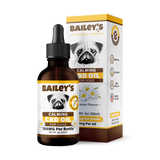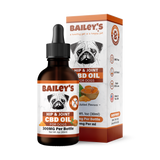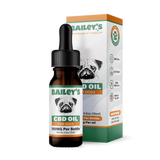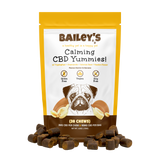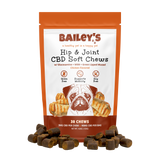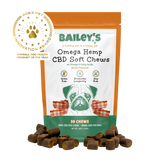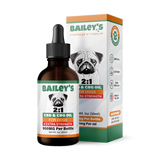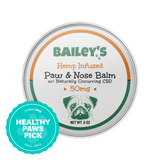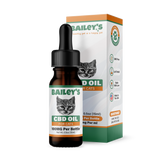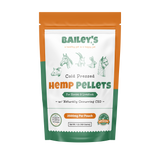Grulla Horse: Coat Color in Equines

The Grulla horse is a unique and fascinating equine breed known for its distinctive coat color. In this article, we will delve into the various aspects of the Grulla horse's coat color, including its origin and history, the scientific factors underlying this coloration, different variations of the Grulla coat, and essential care and maintenance tips for these majestic horses. We will also explore the representation of Grulla horses in popular culture. So, let's embark on this captivating journey into the world of Grulla horses.

Table of Contents
1. Understanding the Grulla Horse
The Grulla horse, also known as the grullo or blue dun, has captured the admiration of horse enthusiasts worldwide due to its striking coat color. This unique coat color is characterized by a varying shade of gray or silver with a distinct dorsal stripe down its back. To fully appreciate the beauty of the Grulla horse, it's important to delve into its origin and history.
1.1 Origin and History of the Grulla Horse
The Grulla horse can trace its roots back to ancient times, with evidence of similarly colored horses found in cave paintings dating back thousands of years. These horses were highly valued for their camouflage abilities and endurance, especially in harsh terrains.
One can imagine the ancient tribesmen, with their primitive tools, relying on the Grulla horse's natural ability to blend into its surroundings. These horses would have been their trusted companions, helping them navigate treacherous landscapes and providing them with a means of transportation.
As civilizations evolved, so did the role of the Grulla horse. They were sought after by warriors for their strength and stamina in battle. The sight of a Grulla horse charging into battle, its silver coat glistening in the sun, must have struck fear into the hearts of their enemies.
In modern times, the Grulla coat color is most commonly associated with certain horse breeds, such as the American Quarter Horse, Spanish Mustangs, and Icelandic horses. However, it's worth noting that not all horses within these breeds possess the Grulla coat color.
Today, breeders carefully select and breed Grulla horses to preserve their unique coat color and characteristics. They continue to captivate horse enthusiasts, who appreciate the historical significance and beauty of these magnificent creatures.
1.2 Unique Characteristics of the Grulla Horse
Aside from their stunning coat color, Grulla horses possess other unique characteristics. They often have zebra-like striping on their legs, known as "stripes," and primitive markings, which are reminiscent of their ancient ancestors. These markings can include a dorsal stripe, leg barring, and shoulder stripes, adding to their distinctive appearance.
Imagine standing in a field, surrounded by a herd of Grulla horses, their stripes and markings creating a mesmerizing pattern. Each horse is an individual work of art, with its unique combination of markings, making it truly one-of-a-kind.
Additionally, Grulla horses tend to have a strong build, exemplifying their resilience and versatility. Their strength and agility make them well-suited for various equestrian disciplines, including ranch work, trail riding, and even dressage.
These horses have been bred for generations to possess not only their striking coat color but also the physical attributes necessary for the tasks they were historically used for. Their muscular build and endurance allow them to excel in demanding activities, making them a favorite among riders who appreciate a horse that can handle any challenge.
Whether it's the historical significance, the unique coat color, or the impressive physical attributes, the Grulla horse continues to captivate the hearts and minds of horse enthusiasts around the world. Their beauty and charm are a testament to the enduring legacy of these remarkable creatures.

2. The Science Behind the Grulla Coat Color
While the Grulla coat color is visually captivating, it is also fascinating from a scientific standpoint. Understanding the genetic factors and the role of melanin in coat color is key to comprehending why Grulla horses possess such an enchanting hue.
2.1 Genetic Factors Influencing the Grulla Coat
The Grulla coat color is influenced by various genetic factors. One essential genetic component is the presence of the dun gene, which is responsible for the distinctive coat coloration seen in Grulla horses. In simple terms, this gene dilutes the base coat color, resulting in the unique shades of gray or silver seen in Grulla horses.
But the dun gene is not the only genetic factor at play. Other genes contribute to the overall appearance of Grulla horses. For example, genes affecting primitive markings and striping on the legs can also influence the final look of the coat. These genetic factors can vary among individual horses, resulting in different shades and patterns within the Grulla coat color spectrum.
Furthermore, the interaction between these genetic factors is complex and can lead to unexpected variations. Some Grulla horses may have a more pronounced dorsal stripe, while others may exhibit faint striping or even none at all. The combination of these genetic factors creates a diverse and captivating array of Grulla coat patterns.
2.2 The Role of Melanin in Coat Color
Melanin, the pigment responsible for coat color in horses, plays a pivotal role in the development of the Grulla coat color. The amount and distribution of melanin within the hair shafts determine the intensity of the coat color. In Grulla horses, less melanin is present, resulting in the unique gray or silver shade and the striking contrast with the darker dorsal stripe.
However, the role of melanin goes beyond just determining the base color. It also influences the secondary colors and shading within the Grulla coat. The interplay between genetic factors and melanin production creates the astounding range of Grulla coat variations observed in different horses.
For instance, some Grulla horses may have a lighter overall coat with subtle variations of gray or silver, while others may exhibit darker shades that give a more dramatic appearance. The distribution of melanin can also create interesting patterns, such as dappling or mottling, adding further complexity to the Grulla coat color.
Studying the intricate relationship between genetic factors and melanin production in Grulla horses continues to be a fascinating area of research. Scientists are constantly uncovering new insights into the mechanisms behind this captivating coat color, further deepening our understanding of the science behind the Grulla coat.
When it comes to the shades and patterns found in Grulla horses, the possibilities are truly endless. One of the most striking variations is the dun factor, which can create a range of unique patterns on the horse's coat.
One such pattern is the "cobwebbing" effect, where the Grulla horse's coat is adorned with intricate web-like markings. These delicate patterns add a touch of mystique and enchantment to the already captivating appearance of the Grulla coat color.
Another fascinating variation is the "frosting" effect, where the Grulla horse's coat is sprinkled with lighter-colored hairs, resembling a dusting of frost. This ethereal pattern gives the horse an almost otherworldly appearance as if it has been touched by a magical frost.
Additionally, some Grulla horses may exhibit a "marbled" pattern, where the coat appears mottled with different shades of gray, creating a mesmerizing and unique visual effect. This marbled pattern adds depth and complexity to the already captivating Grulla coat color.
Furthermore, there are Grulla horses that display a "shadowing" effect, where the coat appears to have darker areas concentrated around the horse's body, giving it a sense of depth and dimension. This shadowing effect adds a touch of drama and intrigue to the overall appearance of the Grulla horse.

Lastly, some Grulla horses may exhibit a "brindle" pattern, where the coat displays vertical striping or streaking, reminiscent of the patterns seen in certain dog breeds. This unique pattern adds a touch of boldness and individuality to the Grulla coat color, making each horse truly one-of-a-kind.
Related Article📰:
3. Final Thoughts
As you can see, the variations of the Grulla coat color are truly remarkable. From the classic silver or smoky gray with a prominent dorsal stripe to the intricate patterns and unique effects, Grulla horses are a sight to behold. They are a delight to behold and are worth taking the time to learn about and care for. Whether you're a horse enthusiast or simply appreciate the beauty of nature, the allure of the Grulla coat color is sure to captivate your imagination.Related: Top Selling Equine Products
Use code TRYBAILEYS25 for 25% OFF your first purchase!

